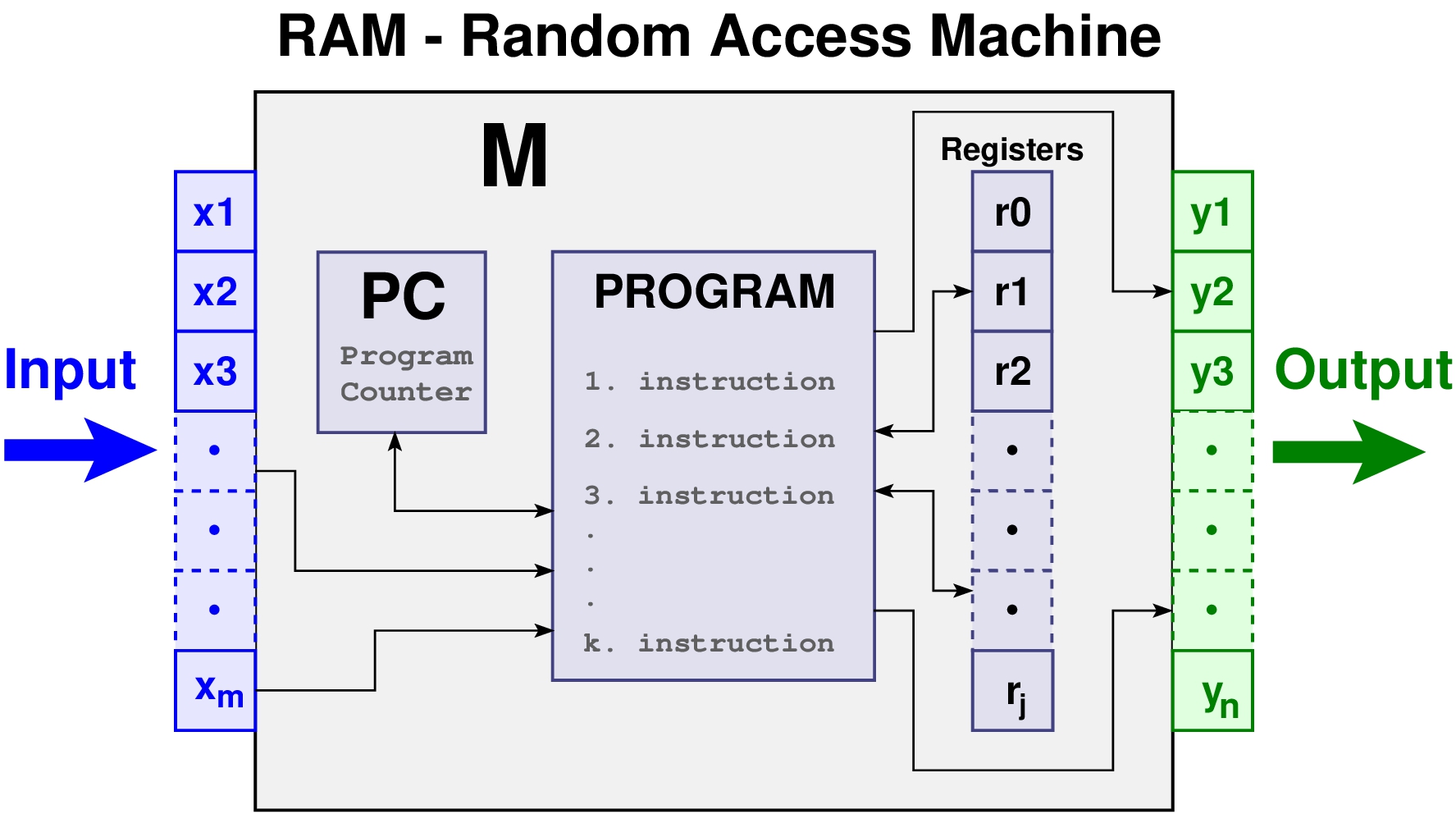Introduction¶
- PyRamPL is a simple Python package for simulating Random Access Memory Machine programs within the context of an introductory course on computational models.
- It is a lightweight package especially designed for small RAM programs, such as those that are presented in introductory academic courses on the theory of computation.
- It can be a useful companion for theoretical courses on
computation models and languages who wish also to engage
the students with some programming experience and skills.
- It was designed to be used in such a course by the author (Hebrew book at http://samyzaf.com/afl.pdf).
- It enables students to easily experiment with RAM programs for their exercises, and to test correctness of their solutions.
- It also provide an opportunity for students to get a taste of how programming looks like while learning theoretical computation course.
- There are many different definitions of a RAM machine in the literature but from an educational perspective most of them are adequate for presenting a computational model resembling a modern computer system and its associated assembly programming language.
WARNING! Our current very early version of PyRamPL is not yet making good syntactical checks, so make sure to write your RAM programs correctly or else you will not get any meaningful feedback! Since RAM programs have a very simple syntax we do not expect this to be a real problem.






